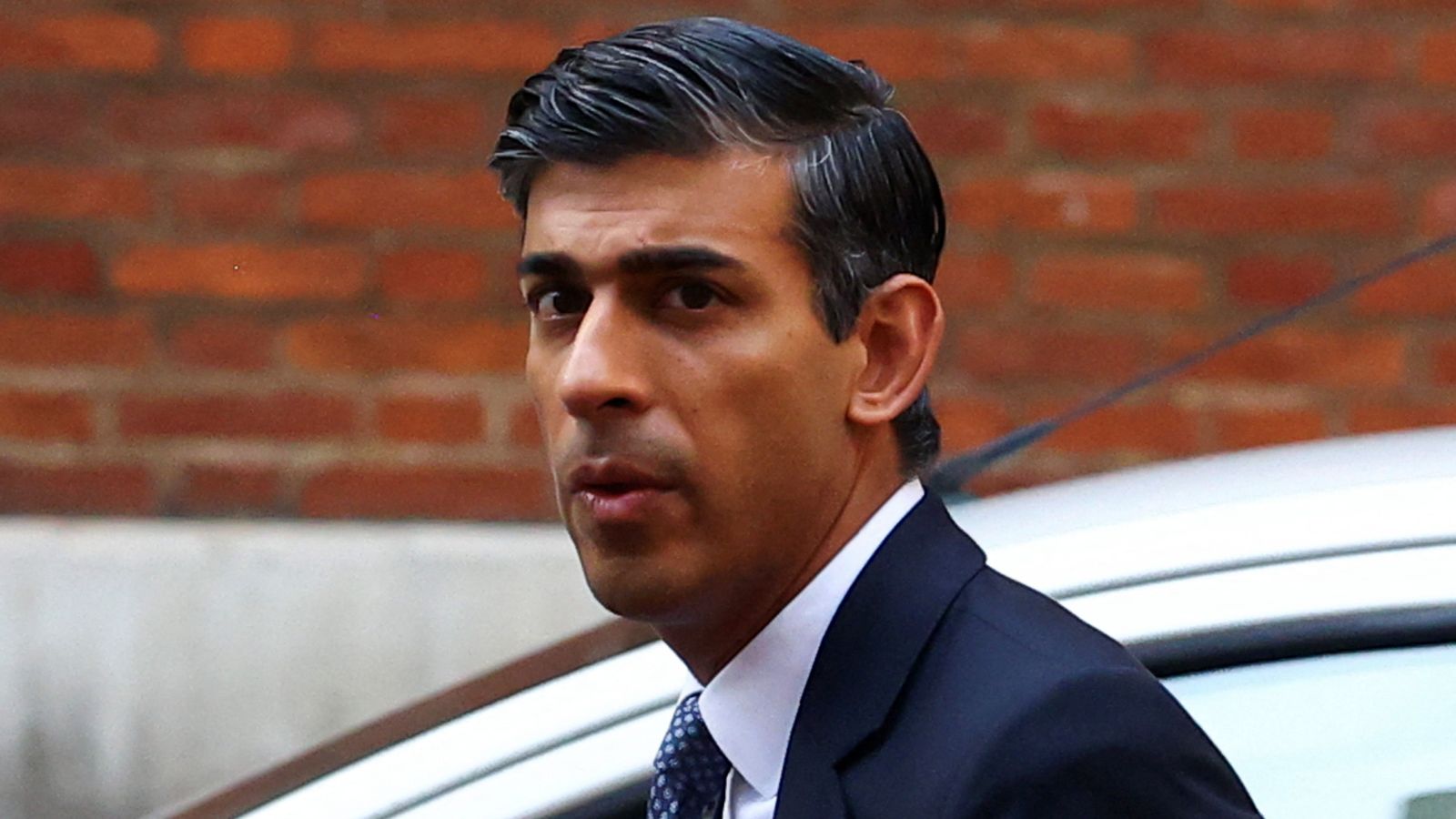But seven weeks ago, Rishi Sunak was cast on to the political scrapheap as he lost out to Liz Truss to become prime minister and retreated to his West Yorkshire constituency, his ambitions shattered and his hopes for political power now beyond his grasp.
But on Monday, Mr Sunak staged the most remarkable of political comebacks in modern times, as the 42-year-old politician won the latest leadership contest, after Penny Mordaunt dropped out and Boris Johnson decided not to stand.
He will soon become the country’s 57th prime minister after a series of plot-twists, feuds and cock-ups so preposterous that, at times, the Tory party looked like it had been commissioned to write the plot lines for the next Aaron Sorkin political drama box set, rather than running the country.
Rishi Sunak wins race to be prime minister – live updates
Beyond the drama over the past few months, his election has been remarkable in other ways too – he will be our first British Asian prime minister, our first Hindu prime minister, and our second-ever youngest prime minister.
His is a journey of near political annihilation to victory in a dizzyingly short period of time, as the mistakes of his rival changed his destiny too.
When I asked one of his supporters, Tory MP Stephen Hammond, whether he was – like me – rather “dazed and confused” by this discombobulating turn of events, he told me that he was “delighted”.
Rishi Sunak to become PM tomorrow after mid-morning meeting with King Charles
Sunak must deal with Northern Ireland Protocol to restore Stormont, DUP warns
Rishi Sunak: What are his first priorities as new PM?
“We now have a prime minister who’s going to govern in the interests of the whole country,” he said.
“I think he’ll choose the best talents of the Conservative Party to make sure we do that. And it’ll be a competent, sensible government.”
For those who supported him, the Tory “experiment” of personality-driven populist leadership – Boris Johnson – and ideological zealotry – Liz Truss – is over.
Mr Sunak, they hope, will mark a return to sensible, solid leadership.
Please use Chrome browser for a more accessible video player
In a short statement after he was appointed party leader and prime minister elect, Mr Sunak pledged to serve with “integrity and humility” – two traits critics of his predecessors said they lacked.
He also acknowledged the “profound economic challenge” faced by the country and said his priority was to bring about “stability and unity” after the most fractious of times.
That might be the hope, what is the reality?
Read more:
Who is Rishi Sunak?
How do Sunak and Starmer measure up with voters?
First up, when Liz Truss was elected in September, MPs agreed that she was facing the toughest in-tray since the 1970s, with the energy bill crisis, spiralling inflation, a worsening cost of living crisis, and pressure on public services and public sector pay.
That in-tray has got harder still following Ms Truss’s handling of the economy, which has only served to further imperil government finances and push up interest rates, leaving the new PM and his chancellor with some very difficult decisions to take over tax and spend policies.
It was hard to see how Ms Truss was going to get cuts in public spending through parliament, be it from rowing back on defence spending to lifting benefits in line with inflation.
You saw last week that she was forced to recommit to lifting pensions in line with inflation after a backbench rebellion just two days after her chancellor refused to do so.
One figure familiar with Treasury thinking told me last week that the new chancellor, Jeremy Hunt, was staring at a black hole in the public finances so big – despite the £32bn of tax cut reversals carried out by junking the mini-budget – that austerity cuts this time around might have to be even bigger than those imposed by George Osborne after the financial crisis in the early part of the last decade.
The prime minister might have changed, but the in-tray is still very much there.
Please use Chrome browser for a more accessible video player
The second big issue for Mr Sunak is whether the party, after all the bloodletting of recent months, can genuinely come back together or whether it is ungovernable.
The incoming PM has certainly made inroads into bringing the party together, picking up the support of voices on the right of the party – Suella Braverman, David Frost, Steve Baker, Sir Iain Duncan Smith – as well as those on the centre ground, such as Tom Tugendhat.
He’d totted up nearly 200 public nominations – well over half of the parliamentary party – before Ms Mordaunt withdrew from the race, as well as picking up senior Johnson supporters, from Priti Patel to James Cleverly.
His backers say this reflects a party that is prepared to come back together, but don’t forget that Mr Johnson did – and these figures were independently verified by the 1922 committee – garner support of 102 MPs.
A rump of those could be irreconcilable to a Sunak premiership, given that they blame him for ousting Mr Johnson in the first place.
If a block of 35 or so MPs consistently refuse to play ball, Mr Sunak will soon be hamstrung in trying to get policy through parliament.
As those MPs who backed him cheered on the steps of Conservative Campaign Headquarters this afternoon, there were a number of others staying away from the action, nursing grievances that may not be easy to bury.
A tweet from Nadine Dorries, Mr Johnson’s most ardent backer, when the former PM withdrew from the race, was ominous.
“Boris would have won members vote [and] already had a mandate from the people,” she wrote. “Rishi and Penny, despite requests from Boris refused to unite which would have made governing utterly impossible.
“Penny actually asked him to step aside for her. It will now be impossible to avoid a general election.”
How many more might feel the same?
‘Big tent cabinet’
One way Mr Sunak is expected to try to avoid schisms with different groups within the party is to create a big tent cabinet – something that Mr Johnson and Ms Truss did not do.
That has the effect of binding those with different views into the government, but also means the PM really will have to rule by cabinet government rather than trying to steamroller decisions through.
And the final controversy, picked up by Ms Dorries, is legitimacy.
Three prime ministers in three years – two of them in less than two months – raises the question about legitimacy and mandate.
Mr Sunak might try to answer the latter by returning the principles of the 2019 manifesto upon which the Tory party was elected.
But what of legitimacy? The party is trailing 20+ points in the polls and have changed leader twice without putting it to the British public.
Labour will argue that he has no mandate to govern and might well – as it did on the matter of the fracking vote that ended up toppling Ms Truss – try to divide the Tory party with votes on wedge issues.
Mr Sunak could also find himself coming under heavy political fire over his personal wealth, his wife’s historic tax arrangements (she was a non-dom but has now changed that arrangement) and his partygate fine.
Please use Chrome browser for a more accessible video player
Labour might well try to paint him as another public school prime minister who is out of touch with ordinary people and their lives.
Mr Sunak, for his part, will argue that he wasn’t born into great wealth and instead had parents who made sacrifices for him to succeed.
But Labour believe this is a weak flank for Mr Sunak: this is a reason why party operatives thought Penny Mordaunt was a tougher opposition for Sir Keir Starmer.
What he has got going for him is that the bar has been set so low by his predecessor.
Ms Truss had to junk her entire policy platform, lost any authority within her parliamentary party and became the most unpopular leader since polling began in a matter of weeks.
Mr Sunak might conclude from that the only way is up. But even if he can somehow begin to repair and even reunite his party, can he convince the country to look at him and the Conservatives again?






